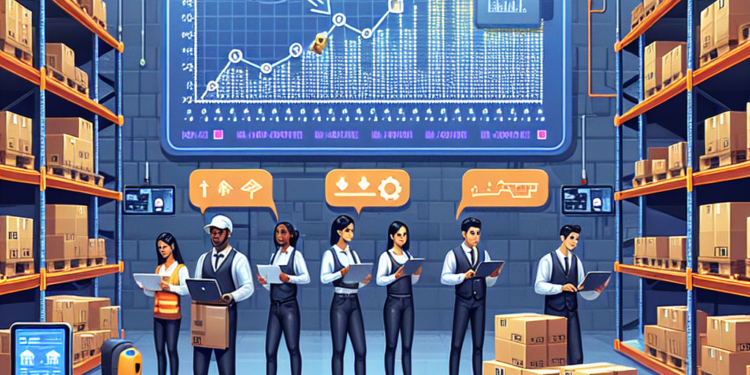Warehouse management has always been a complex and demanding task. With the rise of e-commerce and the increasing demand for quick and accurate order fulfillment, warehouse managers are constantly looking for ways to streamline their operations and improve efficiency. One promising solution that has gained popularity in recent years is the use of artificial intelligence (AI) technologies.
AI has the potential to revolutionize warehouse management by automating tedious and time-consuming tasks, optimizing inventory management, and improving overall operational efficiency. However, implementing AI in a warehouse setting is not without its challenges. In this article, we will explore some of the key lessons learned from using AI in warehouse management and how organizations can overcome these challenges to unlock the full potential of this technology.
Lesson 1: Data Quality is Key
One of the most important lessons learned from implementing AI in warehouse management is the importance of data quality. AI algorithms rely on large amounts of data to make accurate predictions and recommendations. If the data being fed into the system is inaccurate or incomplete, the AI model will produce unreliable results.
To ensure the success of AI implementation in warehouse management, organizations must invest in data quality management processes. This includes regular data cleaning, validation, and enrichment to maintain the integrity of the data. Additionally, organizations should invest in data visualization tools to gain insights into their data and identify any patterns or anomalies that could impact the performance of their AI algorithms.
Lesson 2: Integration with Existing Systems
Another lesson learned from implementing AI in warehouse management is the importance of integrating AI technologies with existing warehouse management systems. Many organizations already have sophisticated warehouse management systems in place, and it can be challenging to incorporate AI technologies into these systems seamlessly.
To overcome this challenge, organizations should work closely with their IT teams to ensure that the AI technologies are compatible with their existing systems. This may require custom development work to integrate the AI algorithms with the warehouse management software. Additionally, organizations should invest in training for warehouse staff to ensure they are comfortable using the new AI technologies.
Lesson 3: Change Management is Essential
Implementing AI in warehouse management requires a significant cultural shift within an organization. Warehouse staff may be resistant to change or feel threatened by the implementation of AI technologies. It is important for organizations to invest in change management processes to educate and train employees on the benefits of AI and how it can improve their job performance.
Furthermore, organizations should involve warehouse staff in the decision-making process and solicit feedback on how AI technologies can be optimized for their particular needs. By involving employees in the implementation process, organizations can create a sense of ownership and buy-in for the new technologies.
Lesson 4: Continuous Improvement is Key
AI technologies are constantly evolving, and organizations must be prepared to adapt to these changes. Implementing AI in warehouse management is not a one-time project but rather an ongoing process that requires continuous monitoring and optimization.
Organizations should regularly review the performance of their AI algorithms and make adjustments as needed to improve accuracy and efficiency. This may involve tweaking the algorithms, updating data sources, or investing in new AI technologies that offer additional capabilities.
Lesson 5: ROI Measurement is Critical
Finally, one of the most important lessons learned from implementing AI in warehouse management is the importance of measuring return on investment (ROI). AI technologies can be costly to implement and maintain, so organizations must be able to demonstrate the value that these technologies provide.
To measure ROI, organizations should establish key performance indicators (KPIs) that align with their business goals, such as order fulfillment rates, inventory turnover, and labor efficiency. By tracking these KPIs before and after implementing AI technologies, organizations can quantify the benefits of AI and make informed decisions about future investments.
In conclusion, implementing AI in warehouse management can have a transformative effect on operations, but it is not without its challenges. By investing in data quality management, integrating AI technologies with existing systems, focusing on change management, continuously improving AI algorithms, and measuring ROI, organizations can overcome these challenges and unlock the full potential of AI in warehouse management. With careful planning and a commitment to innovation, organizations can leverage AI to optimize their warehouse operations and stay ahead of the competition in this fast-paced industry.













